Growing the gooseberry in Russia began to do much earlier than currant bushes. In those long-standing times, he was called the Kryzhbersene, a roof, Agryz, northern grapes. It can give the fruit annually for 20-40 years. But many still give preference to currant, dislike the gooseberry bushes, since when collecting berries, you can get scratches from his barns. In our article, we will tell not only about the old prickly bushes of the gooseberry, but also about those that are weakly odds or do not have thorns. How to care for a bush so that it is prolific, gave delicious and fragrant berries?
Feature and Description of the gooseberry
The average height of the shrub from 120 to 150 centimeters. The bush looks compact if its cylindrical shoots grow almost straight. Or spicy - when his shoots are directed in different directions. The bark on them is gray-brown. Spikes are similar to thick needles, placed perpendicular to the shoots. The leaflets are green, in the form of rounded or heart-shaped, with three or five blades and the presence along the edge of stupid teeth. Under the ground is a pretty voluminous urine root system. In May on the gooseberry, greenish or reddish flowers are revealed. Fruits can be of different shapes - rounded, oval, ovoid, pear-shaped. Sometimes they are bristles on them. Coloring is also diverse - green, yellowish, whitish, reddish or with a purple tint. Middle weight of one fruit 4-5 grams. There are now many varieties with large berries, sometimes their weight even reaches 40-50 grams. Ripening from different varieties occurs from June to Augustus inclusive.
The first berries with branches can be broken after two or three years from the moment of landing. It will take five years, and the bush will give maximum yields.
Culture Summary, does not need a pollinator. But if there is still a gooseberry nearby (for example, a "plum", "Russian"), then the yield rises. Berries, collected from the bush, are well tolerated transportation, do not impenet, are last saved.
The fruits of the gooseberry are rich in ascorbic, riboflavin, p-active compounds, apple, lemon, nicotine, folic acids, carotine, chlorophyll, iron, calcium, phosphorus, pectin substances.
Variety of gooseberry varieties
The varieties show differences in the size of berries, their taste, color, shape, smoothness, or chosenness, maturation, yield, presence or absence on spike shoots.
- Sweet fruits with excellent tastes give varieties: "Belarusian sugar", "Orlinok", "Kolobok", "Black Drop", "Spring", "Honey", "Pink-2", "Neshlukhovsky", "Konfat".
- Very fragrant berries in varieties: "Flamingo", "Hinnomaki Strekh", "African", "Defender", "White Triumph".
- Early ripen fruits on the "spring", "Salute", "Orlynka", "Ural Emerald", "Yarov".
- Following them, the harvest is sleeping on the bushes of "prunes", "Kolobka", "Krasnosvethansky", "Fomb".
- Late varieties are considered: "Chernomor", "Sadko", "Malachite", "Mayak", "Serenada", "Chernysh".
- Very many spikes at varieties: "Ural grapes", "Defender", "Jubilee", "Olavi", "Northerner".
- Smaller poverty of the gooseberry varieties: "Kolobok", "Chernomor", "Change", "Pinik", "Snezhana", "Jubilee", "Commander", "Avangard", "Ark", "Malachit".
- And now we will call the gorge of the gooseberry without spikes: "Lights of Krasnodar", "Pax", "Serenade", "Orlock", "gentle", "Cooperator".
- Siberia is recommended to grow grade: "Black Drop", "Shalun", "Green Rain", "Samurai", "Beryl", "Senator", "sophisticated Chelyabinsk", "Breakfast", "Cooperator", "Red East", "Cossack."
We offer a brief description of only some varieties that are often found at the gardeners in the areas:
- "African" - winter-hardy, there are few spikes on a bush, small berries, dark purple, there is wax raids, sour-sweet, noticeable curvature.
- "Russian yellow" - spikes on a bush rare, fruits oval, large sizes, yellow.
- "Pinik" - His gardeners love for high yield, the excellent taste of fruits, their fragrance. The painting of the fruit is green, there is a Punch-purple "Rushenets". The minus of this variety is spherical exposure.
- "Moskovsky Red" - winter-hardy bush, spikes are located one or two, on wood older than the year fall. Berries are large, their color is red-purple. The pulp inside pink, juicy, sweet. For such a pleasant dessert taste, large-way and yield, it is valued by gardeners.
- "Loves" - winter-hard-resistant, drought-resistant, spoken-resistant and anthracnose, self-dodged, giving high yields. The stretchiness of the bush is average, the color of thick shoots is light green, spikes both single and triple. Leaves are smooth, three-blade, without omission. Oval, large berries yellow-green coloring. The taste is sweet, with obvious sourness.
- "Malachite" - an abdomen of the bush, which has spikes along the entire length of shoots. The color of large five-pointed leaves is gray-green, there is a omission. Green fruits may have a "blush" from the side where they were tested by the sun. Of the advantages of the variety, winter hardiness, self-resistance, drought resistance, mildew, good yields are distinguished.
- "Kolobok" - a bush is stronger, with a good branch. Spike short, are located one by one. Green leaves, soft, three-sand. Form of berries rounded, coloring dark red, eating wax. The bush negatively responds to sharp fluctuations in temperatures in winter, when the thaws suddenly replaced by frosts.
- "Commander" (the second name "Vladil") - on reprehension with the Anthocian coloring shoots of this compact bush completely few spikes. The grade of winter films is rarely amazed spherical, high-yielding. Dark berries have a very pleasant taste. In size, they are medium, in shape - rounded, their color is dark red, almost black. When the grade only appeared, it seemed that these were berries of currant.
- "Orlock" - due to the high winter hardiness is grown in different climatic areas, does not have thorns. The berries are dark, they have a lot of healing properties. So that the yield was higher, next to this variety is advised to plant "Pin", "plum", "Jubilee".
- "Sirius" - there are no spikes on the relegations of this high bush. On large light green leaves there is a slight omission. The berries in the form are rounded, without omission, their color is red. Shows winter hardiness, rarely amazed by fungi.
- "Shalun" - there are no spikes on the shoots of this underdeveloped bush. The leaves are wide, painted in a green color. Berries of rounded shape, their color yellow-green, noticeable wax. Winters good, resistant to diseases.
- "Northern Captain" - during fruiting on a tall bush, on the shoots of which only occasionally there are spines, hang a cluster from black or dark blue berries, densely coated with waxing. Yes, and they have a little similar to grapes. Frostable branches are rarely damaged, and there are few fungal infections.
Take a landing gooseberry
First of all, we will define when you can shelter a new pet on the plot. If we plan to land on the spring, then it is necessary to have time during the period when the snow went down, and thawed the soil, but before the swelling of the kidneys. Experienced gardeners are still advised to carry out landing events in the fall, six weeks before the alleged frosts, so that the gooseberry managed to build young roots and adapted at a new place.
Do you want delicious and large gooseberry fruits? Then place it on the place that is protected from the north wind is well covered and heated by sunlight. If the bush is in the shade, then he will give a little berries, and their sizes will be small. For the gooseberry, dried, sandy, sandy and even clay soils are suitable. Only the last loose will have very often. Places that are constantly moisturized, this berry culture is not suitable. After all, in such conditions, the root neck can be bent, which will lead to the death of the bush. For the gooseberry, the weakly acidic or neutral reaction of the soil medium is desirable. Plot is well reappeted, eliminate all the rhizomes of omnipresent weeds for another week two before the landing procedure.
The landing pit makes approximately a depth and width of 50 centimeters. First, add and stir:
- reworked organic (about ten kilograms);
- ash (one hundred grams);
- double superphosphate (fifty grams);
- calioline sulphate (about forty grams).
In clay soils, it is necessary to add a large sandbank of sand.
Inspect the roots of the seedling first, delete all the dried. Further cut the tops of the twigs, leaving at each shoot of five or six kidneys. It is recommended to even leave the roots in the water in the water, into which the humate sodium was added (for five liters of water three spoons). Roots distribute along the holly in the landing hole, then add the land there and compact it so that there is no emptiness. As a result, the seedlove should stand straight or be slightly tilted, but its root neck must be broken by several centimeters. At the final stage, the plant should be pouring. When the whole moisture is absorbed, pour the mulch under the bush is a peat or a cross-layer of three centimeters.
If you have several seedlings, the interval between compact in the future bushes should be about a meter, but if you are expected to splashing bushes, then two meters.
Gorge care recommendations
- In order to prevent the infection of bushes with diseases and insect pests, many dacifics in early spring, when there is also snow not all the snow, processes their boiling water planting using a sprayer.
- In May, take the time to peel (not deeper than seven centimeters) the soil around the gooseberry bushes. Such loosenings are desirable to spend every three weeks, passing only the period from mid-August to the middle of the first autumn month. In order to spend the soil in the summer, climb the soil.
- Back in May, in order to stimulate the growth of shoots on the bush, you can feed it by the distancering dung alive (of course, strongly divorced). If it is not, then nitrogen and potash fertilizers are suitable.
- In the spring and summer, regularly "Pour" your bushes, so that they have enough moisture for flowering and the tying of fruits, their further maturation. Only the water for moisturizing the soil take the warm, which heated in the barrel per day. Do not leut on the bushes cold water from the hose, otherwise they will be sick. Continue watering and after flowering. "Recharge" the wicking of the bushes is necessary in October, then they will break it better.
- Do not allow weeding herbs near bushes.
- If the gooseberry hangs the branches, they should be lifted with stretch marks, grids, frame framing, backups or ropes stretched between them.
- In the fall, the gooseberry must be fertilized to prepare for the winter, it was able to lay a lot of fruit kidney for the next year.
- Pruning is also advisable to carry out in the fall.
How to feed the gooseberry bushes?
For fruiting, the gooseberry is required to pull the abundance of nutrient elements from the soil. Therefore, he needs an organic and mineral substances annually. In the spring, throw for each bush at half a large bucket of the earth from the compost heap, 50 grams of superphosphate, and also make 25 grams of potassium sulfate and urea (sulfate ammonium). For large bushes, the amount of each fertilizer doubles. Make all fertilizers to the soil around the perimeter of the bush crown, and then close up when loosening. The following feeders spend after flowering and three more weeks, taking a divorced korovyan for them.
If you have a ash, then measure 2 large glasses in May and raise evenly under the bush.
Once every five years close a bunch of dolomite flour.
How and when to trim the gooseberry?
It should be remembered that the awakening of the gooseberry occurs very early. In the spring it is allowed to carry out its trimming only before the start of the sludge, before the twigs begin to swell the kidney, otherwise you hurt the plant. In the spring, dry, weak, broken, damaged, injured from frost, as well as low-productive branches are removed. Slightly cut the bits of branches to seemingly healthy tissues. You can delete the borne shoots that appeared.
The main trigger is advisable to do in the fall, if you are worried that you will not be able to "catch" the right moment of early spring.
Do not neglect the annual trimming, otherwise the bushes are quickly thicken, which will affect the quality of the fruit, the health of the shrub. All branches that are over eight years, cut off to the base. Usually their color is almost black. Then the gooseberry will appear zero shoots, soon they will smoothly replace those that are aging. Soots that are very protrusing to the sides, too, better delete. It is recommended to form a bush so that it was from 10 to 14 shoots of different ages. Cuts on thick shoots, the diameter of which is eight millimeters, process the garden harr.
How to spend a gooseberry transplant?
If the bush rummaged, and you decided that it is necessary to move it, you should first produce its strong trimming. All the old shoots cut on the ring. Most of the scorched crown should also be cut off. Leave 7 young, strong branches, googling one third of them each of them. In the place where you want to transplant your bush, dig a wide landing pit. Pour in her 3 velocked water, let it absorb. Meanwhile, mix your garden ground with a humus. The next step is to steal from all sides your cropped bush, retreating from its base along the radius of at least 35 centimeters. If fat roots come across, they will have to reduce the saw tool or cut off the hatchery. Together with the assistants, pull the bush with a closer land and immerse the trolley. Then put it in to the prepared landing pit. Now it remains to fall asleep all the roots of the soil, sealing it. As a result, a bush will burst into four centimeters lower than it grew up in the previous place. Transplanted bush Palf, inspirate the layer of peat crumbs.
Stambling gooseberry
To form a strambed bush is possible from several perennial branches. After landing, leave two well-positioned strong escapes. Eliminate all the kidneys on them to a height of thirty centimeters. When binding shoots appear, they should be cut. And so for three years. Such evolved branches per season are able to give 2.5 kilograms of berries. At the beginning of the spring, these branches slightly shortening that the crown would be the right form. The shoots are cut out that they strive to go inside, otherwise the part of the branches will be poorly covered by the rays of the sun.
There is another technique for receiving a strap. It will take a polyethylene light-tight tube for it, the diameter of which should be up to 30 millimeters, and length is up to 40 centimeters. The tube from above gently dresses on an annual seedling. Then this seedlock is planted into the garden, blocking the dark tube for several centimeters into the ground. All rules listed earlier are observed throughout the three years.
In order not to break away large branches, as the support is installed, the pegs are installed, to which the twigs are tied up. If branches are very loaded with fruits, then use a wireteller. If you plan to land a multiple strambes, it is enough to make a distance of 50 centimeters between them.
For the formation of stambling forms, you need to choose those varieties that are little branching, do not form many roasting shoots. For example, "Salute", "Krasnosvethansky", "Lefor's sighter", "Pink-2", "Russian".
Another option for receiving a strain is an ads. While diving uses twilight plants of currant gold or tree gooseberries. First, the spikes are cleaned with a cutlery of the gooseberry. The vaccination is carried out at the very beginning of the spring, resorting to the method of improved copulating in the place where the stem ends, and takes the beginning of Crohn. A grafted seedling should be tied to a high peg. The crown form a strain throughout the life.
Methods of breeding gooseberry
It is easiest to multiply by the like bush horizontal grains. Near the bush digging a depth of 10 centimeters. There are flex and laid up developed annual shoots. In two places, attach them with metal brackets. Fall asleep their land is not treated, let them give vertical shoots first. When they will grow by 10 centimeters, you can fall asleep these grooves by humus. After 14 days, exemption. In the fall, you can separate these drags from the bush and move to another place.
For reproduction, you can take and the weathered cuttings of the gooseberry (along with the "heel", that is, a small part of the crust and wood). Cutting (plugging) is carried out with last year's branches. But for further rooting, any cuttings (weathered, green or combined) are first kept in water with heteroacexin, and then rooted in mini-guy.
You can also try to use those parts of the branches that cropped in the spring for reproduction. Place them in the groove, leaving on top of the unwrapped annual increase. Periodically, these places moisturize. It will take time, and you will see signs of growth, it means that the rooting occurred.
Possible diseases of the gooseberry
Spherosek (or pulse dew) is the most common and very dangerous disease of this culture, which can deprive the crop. If you do not take any measures, then in a couple of years, the bush dies. Characteristic symptoms - loose white rings, which increases on shoots, leaves and fruit fruit at the end of May or in summer. Gradually, the transformation of this white climb into a dense brownish crust, the shoots are twisted, dry out, leaflets break, collapse. Berries can not be crushed, crack, fall from the branches. You can overcome the disease by applying to dissolve the flower processing with solutions in which copper-containing drugs have been added (for example, "Hom"). Its 5 liters of water requires 20 grams. You can use "Topaz" by making two treatments - one to flowering, and the second - after. The spherose is greatly affecting such varieties: "prunes", "Russian", "Golden Okonyk", "Triumphal", "Pinik". Level less than a mildew on the gooseberry varieties: "Loves", "Chernysh", "Lighthouse", "African", "Senator", "Peach", "Finnish", "Konfatny", "Beryl", "Cooperator".
Much less often found on the gooseberry Other ailments:
- Mosaic - with this pathology on the leaves there is a picture similar to the mosaic pattern.
- The anthracnose - it is characterized by the occurrence of small brown specks on the leafy plates, after a while they increase in size, covering the entire piece of brownish crust. Soon the sick leaf is broken.
- White spotty (second name - septoriasis) - in June, gray-colored spots appear on the leaves, having brown bourgeing. Gradually, black dots are noticeable for them. Such leaves soon dry and leave the bush. In this foliage fungus and goes to wintering.
- Basic rust - In May or June, orange specks arise on leaves on leaves with the presence of yellowish spores. Shape argument in the form of boals. Leaves and berries with such a bush fall.
Mosaic infect bushes viruses until she is treated. If you see the symptoms of the mosaic, then remove the sick bushes and destroy them.
Fight with rust, spottedness and anthracnosis help spraying with drugs - burgundy liquid, "nitrophen", copper vigorous, "Ridomil", "Fundazol". Two processing should be done:
- the first is done before the kidneys will be revealed;
- the second is done ten days after they collected the entire harvest.
To prevent illnesses, try to remove the whole last year's foliage from under the gooseberry bushes. After all, it can hide the pathogens of disease. You remove all the weed herbs in time that they appear near the gooseberry.
Gojberry pests
The following pests may come to enjoy parts of this plant:
- Gooseberry flax - just before flowering gooseberry, this butterfly penetrates the flowers, puts the eggs there. Soon the green caterpillars are shown that tear off the shell of the frodges.
- Waying - after the "trick" of her larvae, sucking juice, shoots swell, become curves, their growth is stopped, the leaves are twisted. Berries on such shoots come off and fall, not even time to mature.
- The gooseberry sawder - his larvae brushes the leaflets, leaving only solid streaks. They are so voracious that in two days they can spoil the entire bush.
- Cellite ticks - settle on the bottom of the leaves, pull the juices. Leaves brown, bending their edges up and gradual drying.
These pests exterminate, applying specific insecticides. For example, Fufanon, Aktellik, "Phytoverm", "Inta-Vir" take on tracks and butterflies-flames. From the peeler - "carbofos". From ticks, the plant is delivered by the "carbofos", "phytoverm", "phosbecide". Other insecticides used - "Mospilan", "Arrivo", "Aktara".
There is another people's way - the infusion of mustard. They spray the gooseberry bushes in the first half of the summer from the sawder and flax. Prepared by infusion simple: 50 grams of dry mustard powder on 5 liters of water. The time of insteading is two days. Before use, this infusion should be diluted with water twice.
Prevent the invasion of pests perhaps following preventive measures:
- After the snow is immediately treated with boiling water plants.
- In the spring under the bush of the gooseberry, cover with dense material, for example, rubberoid so that pests cannot move from the ground to the bush. Remove such material after flowering.
- Make the autumnal busty, its height is 10 centimeters.
- Favoring berries and leaves periodically assemble from the ground and destroy.
- When the flowering ended, the bushes are treated with "lepyocide" (or "biologist").
The fertility of the gooseberry depends on the varietal affiliation of the bush and the conditions in which it is contained. Thoughtful care of the gooseberry, timely prevention of diseases will allow you to collect abundant crops every year with bushes.

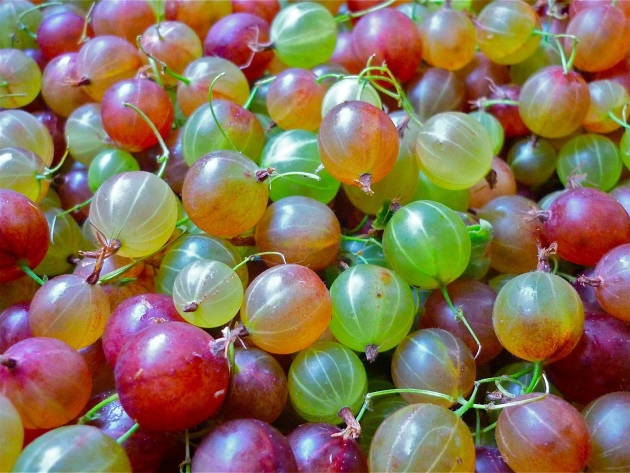
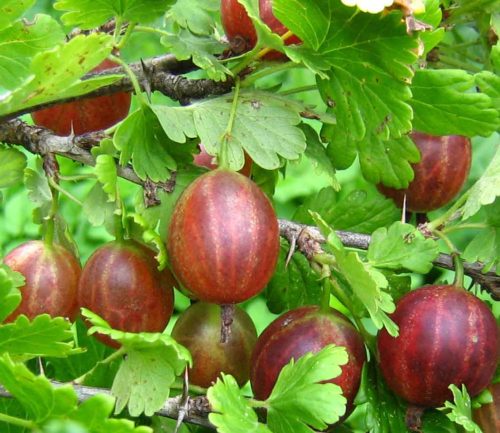
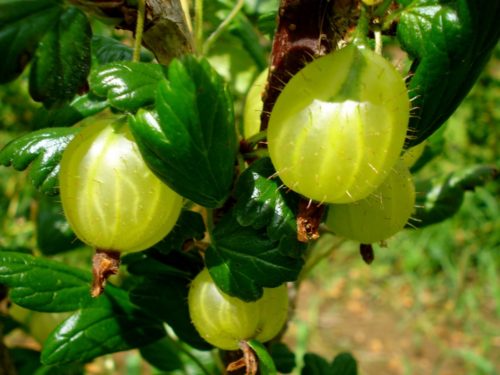
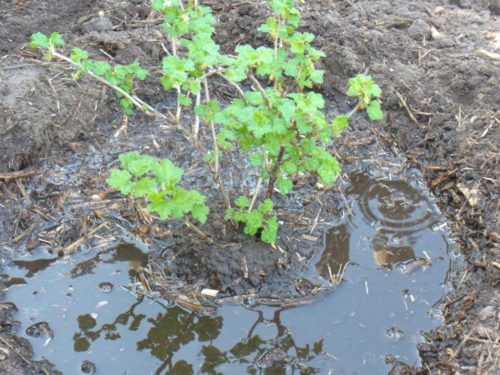
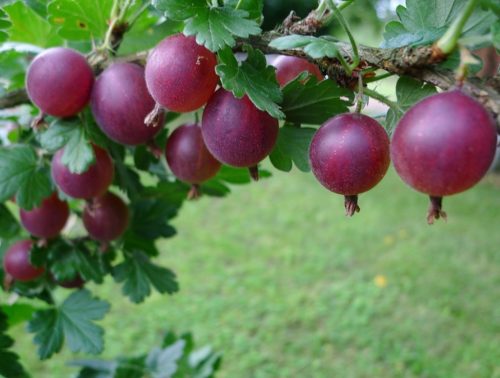
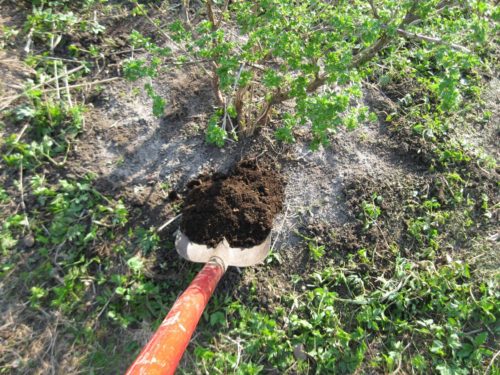
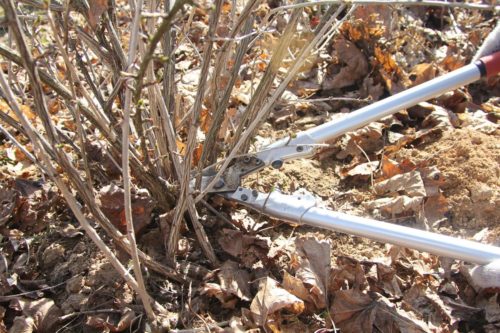
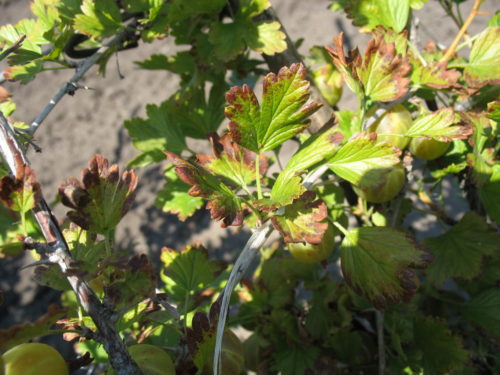
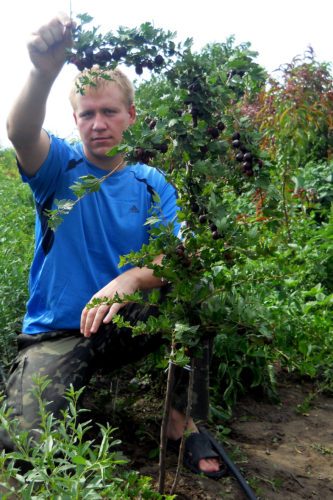
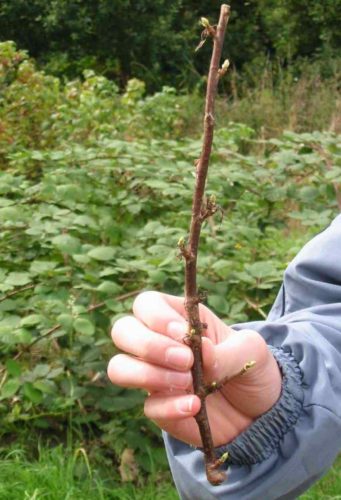

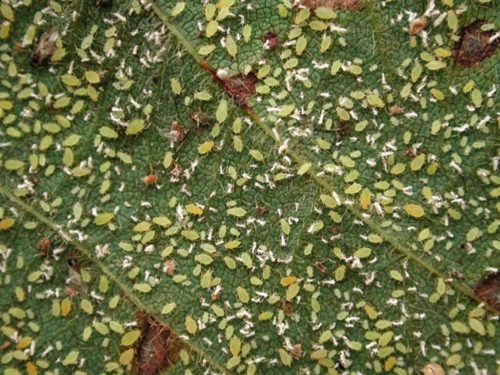
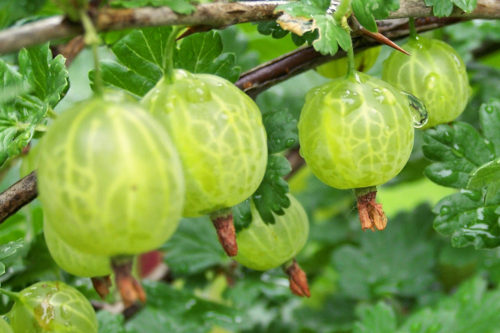
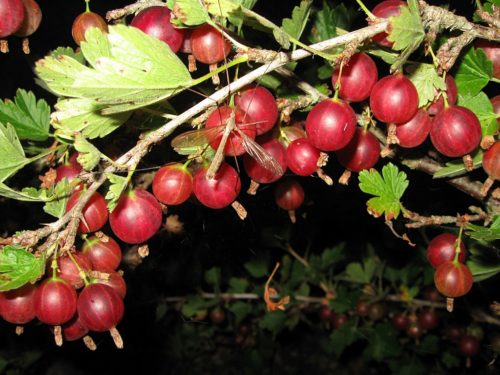
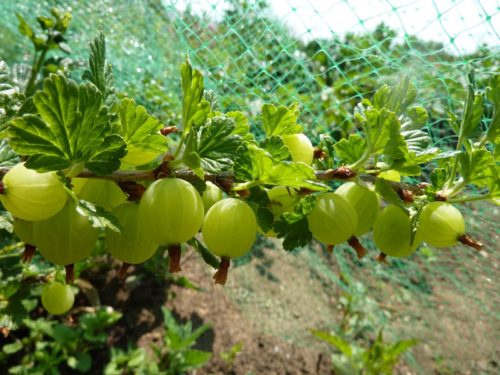
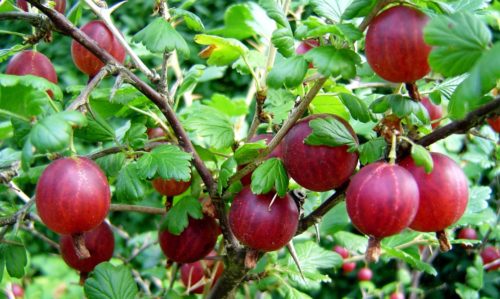












 Start a discussion ...
Start a discussion ...